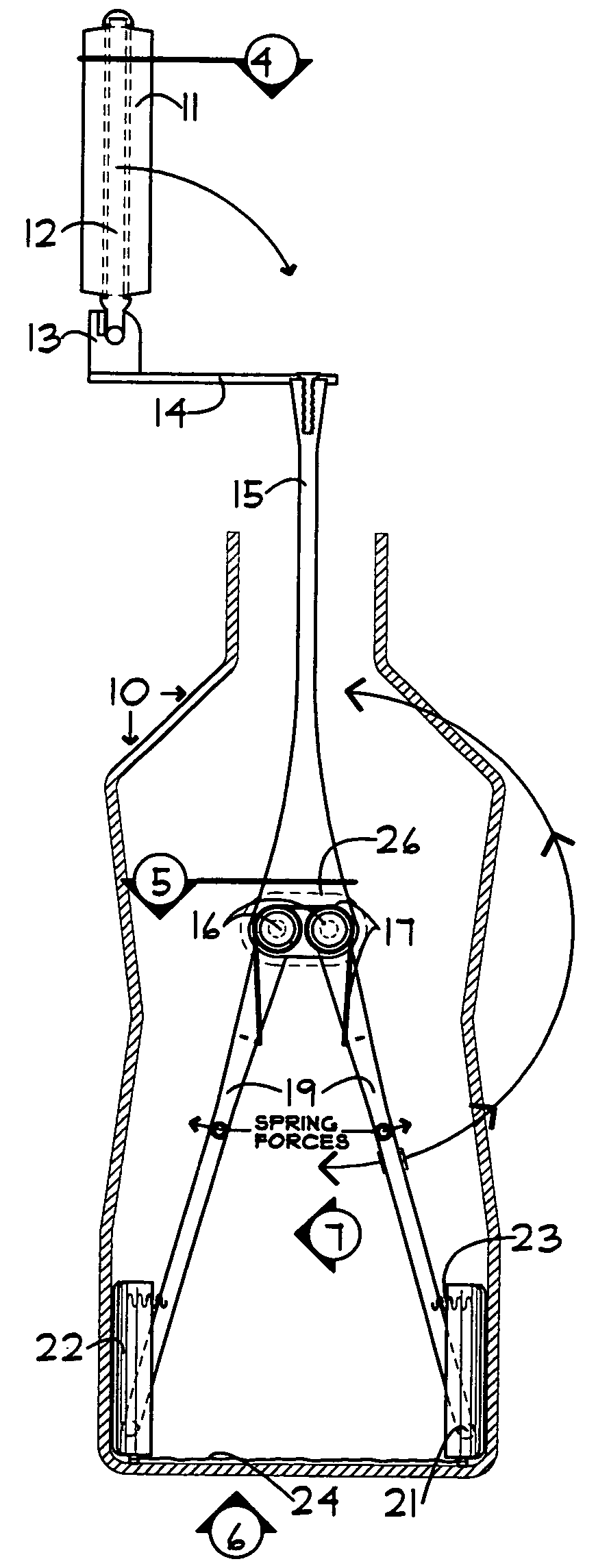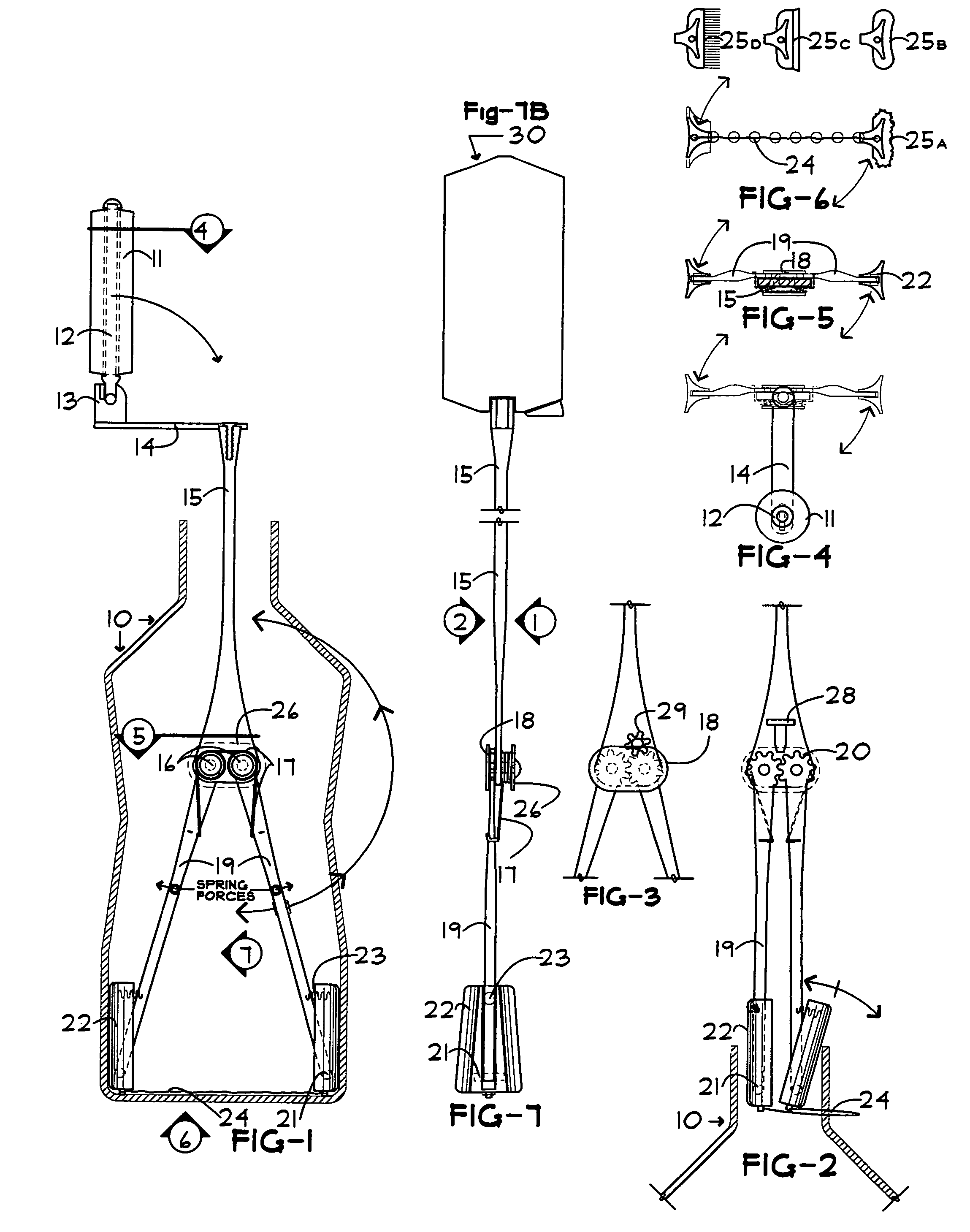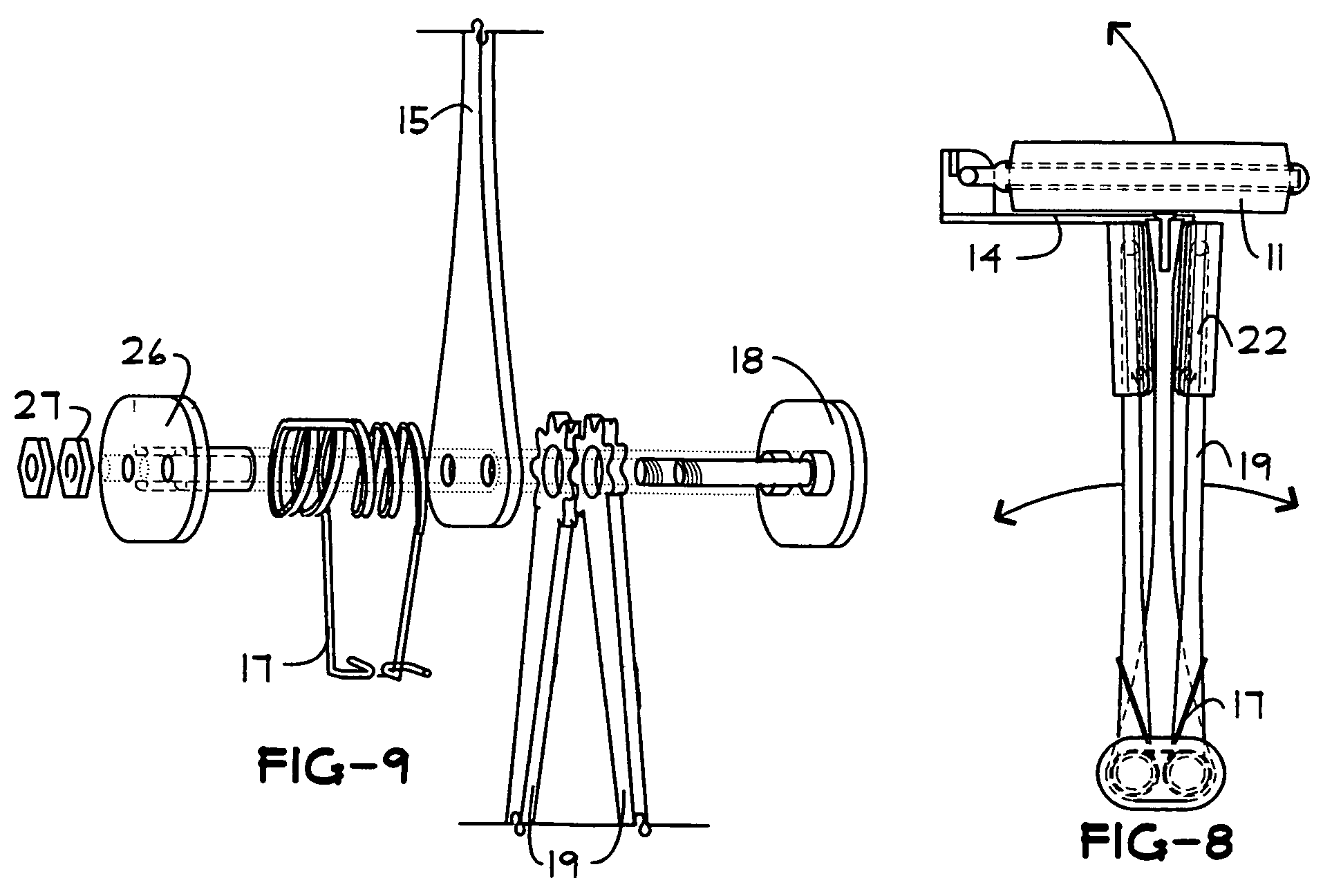Rotatable container interior cleaning mechanism
a rotating container and cleaning mechanism technology, applied in the direction of cleaning equipment, vehicle cleaning, lighting and heating apparatus, etc., can solve the problems of difficult conformity to the many shapes of containers, large size, and laborious designs of previous designs, so as to improve maneuverability, improve control, and quickly dislodge the contents of most containers
- Summary
- Abstract
- Description
- Claims
- Application Information
AI Technical Summary
Benefits of technology
Problems solved by technology
Method used
Image
Examples
Embodiment Construction
[0032]10. Container To Be Cleaned (oriented With Opening Angled Down When Using Mechanism).[0033]11. Padded Grip, which freely Rotates Around (12) the Grip Pivot Arm.[0034]12. Grip-Pivot Arm which pivots in relation to (14) the crank arm, with stops at either end of (11) the padded grip to prevent the grip from sliding out of position.[0035]13. Grip Arm Receiver, with a stop at 90 degrees, permanently attached to (14) the crank arm, and linking (12) the grip-pivot arm by a pin allowing 90-degree rotation.[0036]14. Crank Arm mechanically or permanently Attached at it's opposite end To The top of (15) the Drive Arm.[0037]15. Drive Arm linking the (14) crank arm to the (19) lower arms.[0038]16. Double Hole In Drive Arm to receive pins for lower arms.[0039]17. Double Torsion Spring Around Sleeves of (26) Shield w / double standoff spacer, with the ends hooked around (19) the rotating lower arms. Each Half of the double spring applies rotational pressure opposite The Other onto the lower ...
PUM
 Login to View More
Login to View More Abstract
Description
Claims
Application Information
 Login to View More
Login to View More - R&D
- Intellectual Property
- Life Sciences
- Materials
- Tech Scout
- Unparalleled Data Quality
- Higher Quality Content
- 60% Fewer Hallucinations
Browse by: Latest US Patents, China's latest patents, Technical Efficacy Thesaurus, Application Domain, Technology Topic, Popular Technical Reports.
© 2025 PatSnap. All rights reserved.Legal|Privacy policy|Modern Slavery Act Transparency Statement|Sitemap|About US| Contact US: help@patsnap.com



